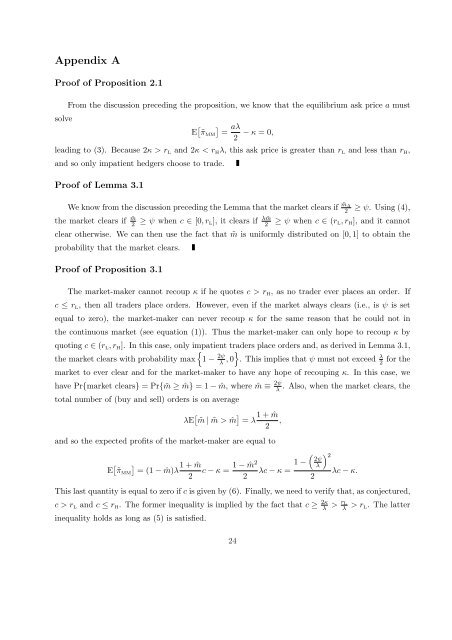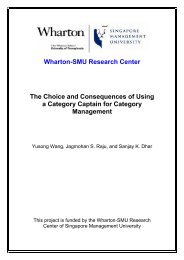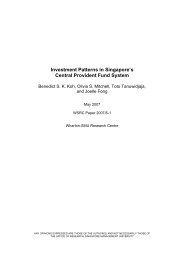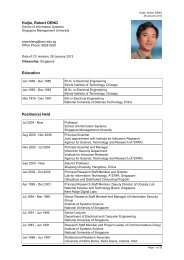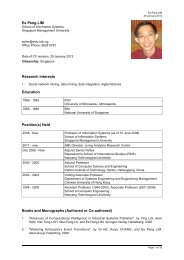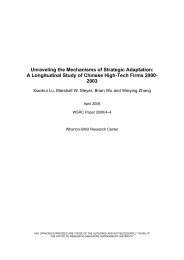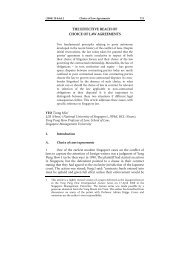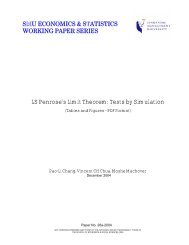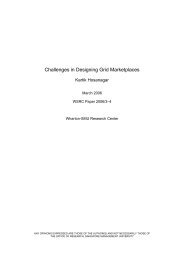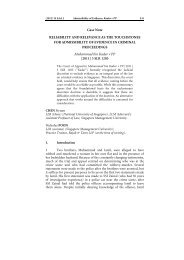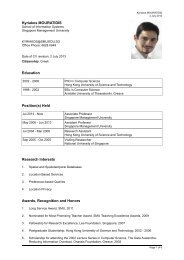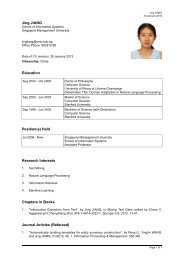The Benefits of Volume-Conditional Order-Crossing - Singapore ...
The Benefits of Volume-Conditional Order-Crossing - Singapore ...
The Benefits of Volume-Conditional Order-Crossing - Singapore ...
You also want an ePaper? Increase the reach of your titles
YUMPU automatically turns print PDFs into web optimized ePapers that Google loves.
Appendix A<br />
Pro<strong>of</strong> <strong>of</strong> Proposition 2.1<br />
solve<br />
From the discussion preceding the proposition, we know that the equilibrium ask price a must<br />
E aλ<br />
˜π MM = − κ = 0,<br />
2<br />
leading to (3). Because 2κ > r L and 2κ < r Hλ, this ask price is greater than r L and less than r H,<br />
and so only impatient hedgers choose to trade.<br />
Pro<strong>of</strong> <strong>of</strong> Lemma 3.1<br />
We know from the discussion preceding the Lemma that the market clears if ˜mA<br />
the market clears if ˜m<br />
2 ≥ ψ when c ∈ [0, r L], it clears if<br />
2<br />
≥ ψ. Using (4),<br />
λ ˜m<br />
2 ≥ ψ when c ∈ (r L, r H], and it cannot<br />
clear otherwise. We can then use the fact that ˜m is uniformly distributed on [0, 1] to obtain the<br />
probability that the market clears.<br />
Pro<strong>of</strong> <strong>of</strong> Proposition 3.1<br />
<strong>The</strong> market-maker cannot recoup κ if he quotes c > r H, as no trader ever places an order. If<br />
c ≤ r L, then all traders place orders. However, even if the market always clears (i.e., is ψ is set<br />
equal to zero), the market-maker can never recoup κ for the same reason that he could not in<br />
the continuous market (see equation (1)). Thus the market-maker can only hope to recoup κ by<br />
quoting c ∈ (rL, rH]. In this case, only impatient traders place orders and, as derived in Lemma 3.1,<br />
<br />
the market clears with probability max 1 − 2ψ<br />
<br />
λ , 0 . This implies that ψ must not exceed λ<br />
2 for the<br />
market to ever clear and for the market-maker to have any hope <strong>of</strong> recouping κ. In this case, we<br />
have Pr{market clears} = Pr{ ˜m ≥ ˆm} = 1 − ˆm, where ˆm ≡ 2ψ<br />
λ . Also, when the market clears, the<br />
total number <strong>of</strong> (buy and sell) orders is on average<br />
λE ˜m | ˜m > ˆm = λ<br />
1 + ˆm<br />
,<br />
2<br />
and so the expected pr<strong>of</strong>its <strong>of</strong> the market-maker are equal to<br />
E 1 + ˆm<br />
˜π MM = (1 − ˆm)λ c − κ =<br />
2<br />
1 − ˆm2 1 −<br />
λc − κ =<br />
2<br />
2 2ψ<br />
λ<br />
λc − κ.<br />
2<br />
This last quantity is equal to zero if c is given by (6). Finally, we need to verify that, as conjectured,<br />
c > rL and c ≤ rH. <strong>The</strong> former inequality is implied by the fact that c ≥ 2κ<br />
λ<br />
inequality holds as long as (5) is satisfied.<br />
24<br />
> rL<br />
λ > r L. <strong>The</strong> latter


